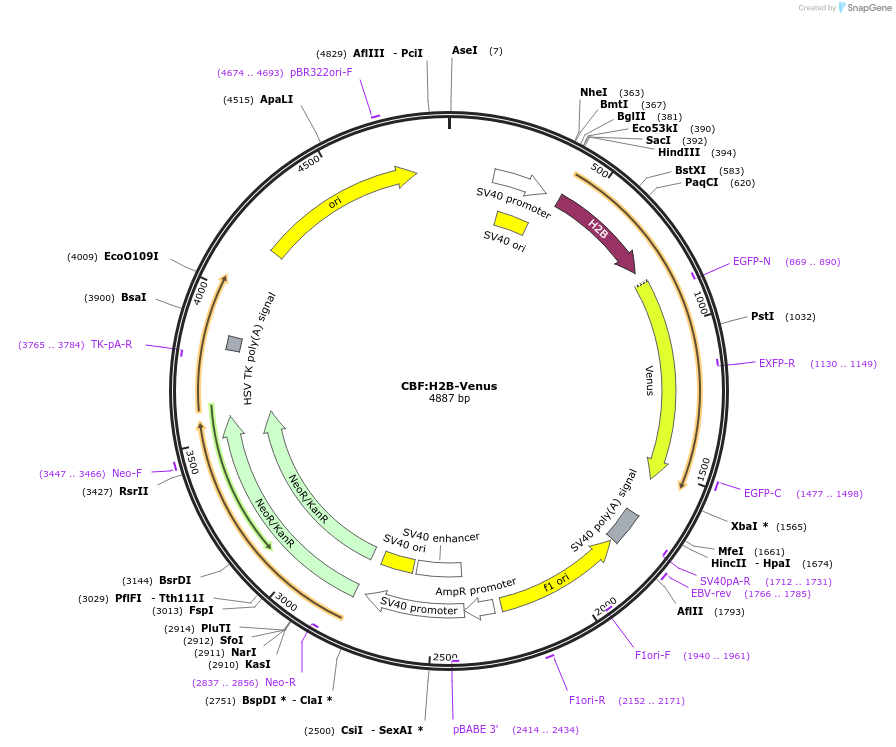-
Depositing Lab
-
Sequence Information
Ordering
| Item | Catalog # | Description | Quantity | Price (USD) | |
|---|---|---|---|---|---|
| Plasmid | 44211 | Standard format: Plasmid sent in bacteria as agar stab | 1 | $89 | |
Backbone
-
Vector backbonepEGFP-N1
-
Backbone manufacturerclontech
- Backbone size w/o insert (bp) 4540
- Total vector size (bp) 4877
-
Modifications to backboneBackbone vector was pEGFP-N1 containing H2B-Venus instead of EGFP. This vector was then cut with AseI and NheI in order to excise the pCMV promoter. This cut vector was then ligated with a PCR amplified CBFRE insert obtained from addgene plasmid #17705 subcloned in the AseI and NheI sites.
-
Vector typeMammalian Expression
-
Selectable markersNeomycin (select with G418)
Growth in Bacteria
-
Bacterial Resistance(s)Kanamycin, 50 μg/mL
-
Growth Temperature37°C
-
Growth Strain(s)DH5alpha
-
Copy numberHigh Copy
Gene/Insert
-
Gene/Insert nameCBF1-Responsive-Element
-
Alt nameCBFRE
-
SpeciesSynthetic
-
Insert Size (bp)337
Cloning Information
- Cloning method Restriction Enzyme
- 5′ cloning site AseI (not destroyed)
- 3′ cloning site NheI (not destroyed)
- 5′ sequencing primer CBFRE AseI Fw
- 3′ sequencing primer SV40 NheI Rev
- (Common Sequencing Primers)
Resource Information
-
A portion of this plasmid was derived from a plasmid made byinsert CBFRE was amplified from addgene plasmid #17705
-
Articles Citing this Plasmid
Terms and Licenses
-
Academic/Nonprofit Terms
-
Industry Terms
- Not Available to Industry
Trademarks:
- Zeocin® is an InvivoGen trademark.
These plasmids were created by your colleagues. Please acknowledge the Principal Investigator, cite the article in which the plasmids were described, and include Addgene in the Materials and Methods of your future publications.
-
For your Materials & Methods section:
CBF:H2B-Venus was a gift from Anna-Katerina Hadjantonakis (Addgene plasmid # 44211 ; http://n2t.net/addgene:44211 ; RRID:Addgene_44211) -
For your References section:
A bright single-cell resolution live imaging reporter of Notch signaling in the mouse. Nowotschin S, Xenopoulos P, Schrode N, Hadjantonakis AK. BMC Dev Biol. 2013 Apr 25;13:15. doi: 10.1186/1471-213X-13-15. 10.1186/1471-213X-13-15 PubMed 23617465







